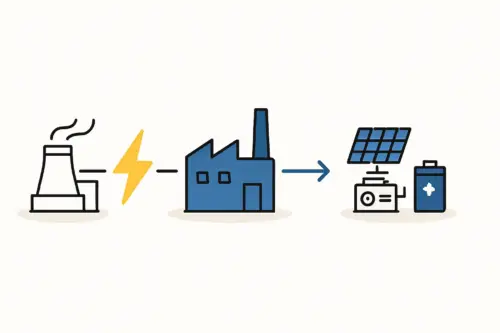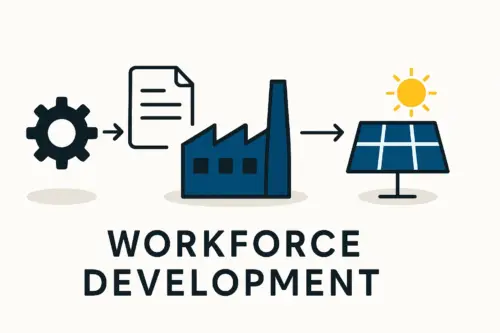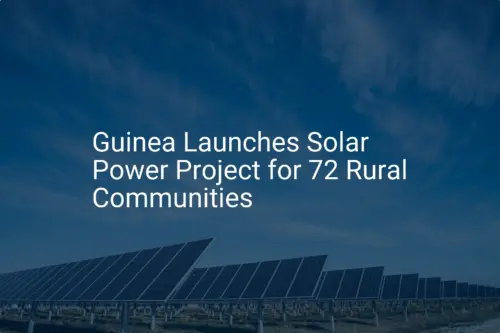For decades, Equatorial Guinea’s economy has been synonymous with its vast oil and gas reserves. Now, a strategic shift is underway. As part of its Horizon 2035 economic diversification plan, the nation is actively creating frameworks to attract investment in non-oil sectors.
This pivot creates a unique opportunity for international business professionals, particularly in renewable energy. There is a strong focus on local solar module manufacturing within designated Special Economic Zones (SEZs).
This analysis offers a clear-eyed assessment for entrepreneurs considering such a venture. It outlines the structure of the nation’s SEZs, the specific financial and logistical benefits available, and the practical steps required to establish a production facility in this emerging Central African hub.
Why Solar Manufacturing in Equatorial Guinea? The Strategic Context
The decision to promote solar manufacturing is not arbitrary; it is rooted in sound economic and geographical logic. Understanding this context is the first step for any investor evaluating the opportunity.
First, Equatorial Guinea enjoys high solar irradiation levels year-round, making it an ideal location for both using and producing photovoltaic (PV) technology.
Second, establishing local manufacturing capabilities directly supports the government’s goals of industrialization, job creation, and reduced reliance on imported goods.
Finally, the country’s strategic location provides a gateway to the Economic Community of Central African States (CEMAC), a regional market with a growing demand for reliable and affordable energy solutions. A manufacturing base in Equatorial Guinea is well-positioned to serve not only the domestic market but also neighboring countries like Cameroon, Gabon, and Congo.
Understanding Special Economic Zones (SEZs): A Primer for Investors
Before examining Equatorial Guinea’s specific offer, it is helpful to understand the purpose of a Special Economic Zone. An SEZ is a geographically defined area where business and trade laws differ from the rest of the country.
Its primary goal is to increase foreign direct investment (FDI), boost trade, and create employment. Governments achieve this by offering a package of incentives, usually centered on tax relief, streamlined customs procedures, and high-quality infrastructure. For a capital-intensive project like a solar factory, these benefits can significantly improve financial viability and reduce operational risk.
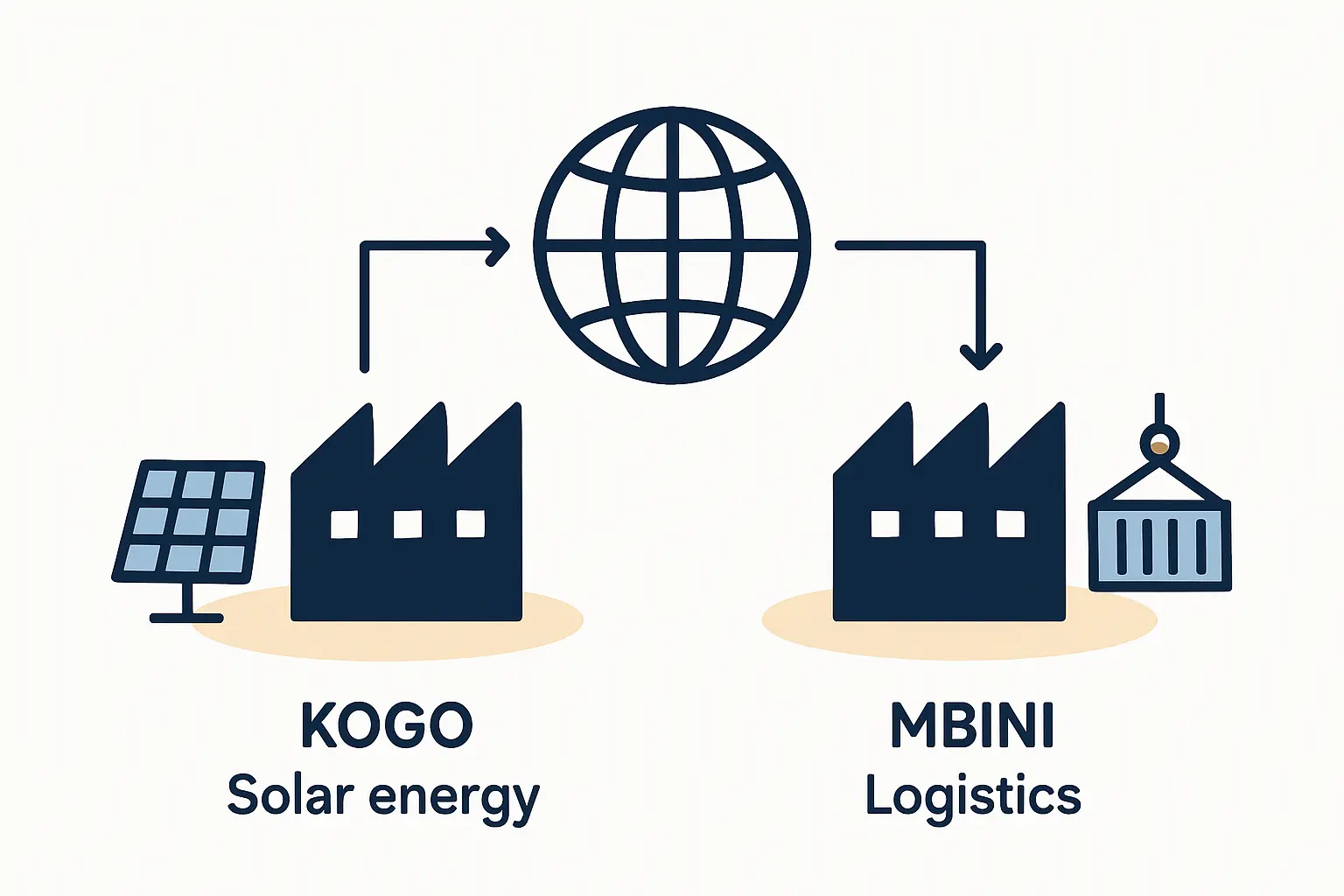
Ready to make big Profits?
The solar Industry is Booming
WE HELP NEWCOMERS to the solar industry start their own solar module production line. Customers can make BIG PROFITS by selling modules and finding investors, without wasting money and time on things they don't need!
Key Incentives and Benefits in Equatorial Guinea’s SEZs
Equatorial Guinea has designated several areas as SEZs, with notable developments in Kogo and Mbini on the mainland coast. These zones are designed to provide a comprehensive support system for new industrial ventures.
Financial and Tax Advantages
The most immediate benefits for an investor are financial. While specific terms are subject to negotiation based on the scale of the investment, the general framework includes:
-
Corporate Tax Holidays: A complete exemption from corporate income tax for a significant period, often extending up to 10 years, allowing the business to reinvest profits into growth.
-
Customs Duty Exemption: Zero import duties on capital goods, machinery, and raw materials required for manufacturing. This substantially lowers the initial investment requirements for a solar factory.
-
VAT Exemption: Exemption from Value-Added Tax (VAT) on the purchase of local goods and services used in the production process.
-
Unrestricted Profit Repatriation: Clear legal frameworks that allow foreign investors to repatriate their profits and dividends.
Infrastructure and Logistics
Inadequate infrastructure is a common challenge for industrial projects in emerging markets. The SEZs address this by providing:
-
Reliable Utilities: Guaranteed access to stable electricity and water supplies, critical for the uninterrupted operation of a solar module production line.
-
Strategic Port Access: Locations like Kogo are being developed as modern port cities, facilitating the efficient import of raw materials (e.g., solar cells, EVA film, glass) and the export of finished modules to regional markets.
-
Developed Land and Facilities: Ready-to-use industrial plots with pre-installed utility connections, reducing the time and cost associated with site preparation and construction.
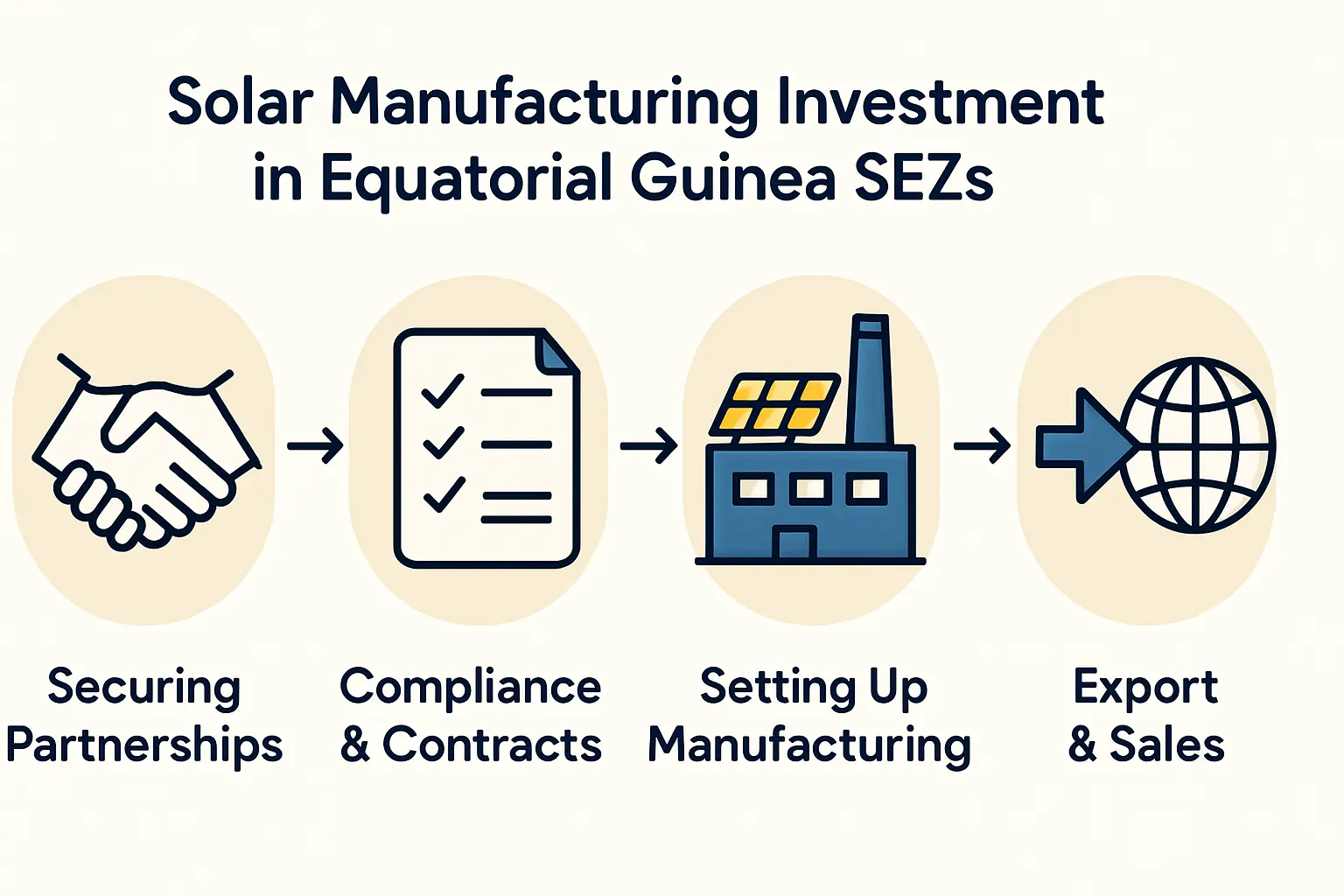
Streamlined Regulatory Environment
Navigating bureaucracy can be a significant deterrent for foreign investors. The SEZs address this by offering a ‘single-window’ service, where a dedicated authority handles all necessary permits, licenses, and registrations. This simplifies the setup process, making it more transparent and predictable for entrepreneurs unfamiliar with local administrative procedures.
Practical Considerations for Establishing a Solar Factory
Leveraging the benefits of an SEZ requires careful planning and execution. Based on experience from turnkey projects, several key areas demand an investor’s focus.
Initial Investment and Factory Scale
A common entry point into a new market is a semi-automated production line with an annual capacity of 20 to 50 MW. This scale keeps the initial investment manageable while being large enough to achieve economies of scale and serve both domestic and niche export markets. A detailed solar panel manufacturing business plan is essential for accurately forecasting costs and revenue.
Supply Chain and Raw Materials
Initially, nearly all raw materials will need to be imported. This requires establishing robust relationships with international suppliers and developing an efficient logistics strategy. The port facilities within the SEZ are a critical asset in this regard. Over time, opportunities may arise to foster a local supply chain for components like aluminum frames or junction boxes.
Technical Planning and Execution
For entrepreneurs without a background in photovoltaics, the technical complexity can seem daunting. Success hinges on a structured approach, which involves selecting the right machinery, designing an efficient factory layout, training local staff, and implementing rigorous quality control protocols. Partnering with an experienced technical consultant for a turnkey solar factory setup can de-risk the project and ensure it meets international standards from day one.

Frequently Asked Questions (FAQ) for Prospective Investors
-
What is the typical timeline to become operational?
With a well-structured plan and the streamlined processes of an SEZ, a 20-50 MW solar factory can typically be commissioned and operational within 10 to 14 months from the project’s start. -
Is a local business partner required to invest in an SEZ?
While not always mandatory, having a reputable local partner can be highly advantageous for navigating local customs, building relationships, and managing administrative tasks. The SEZ authority can often assist in identifying potential partners. -
What is the minimum viable production capacity for a new factory?
A starting capacity of around 20 MW is often considered a viable entry point. This requires an initial workforce of approximately 25-30 employees and allows the business to establish a market presence before scaling up production. -
How does pvknowhow.com assist in this process?
pvknowhow.com provides educational resources, such as structured e-courses and planning guides, to help business professionals through each stage of the process. This foundational knowledge is crucial for making informed decisions before committing significant capital.
The Path Forward: From Initial Interest to Operational Success
Equatorial Guinea’s Special Economic Zones offer a compelling, government-backed framework for entering the growing African solar market. The combination of significant tax incentives, purpose-built infrastructure, and a streamlined regulatory environment directly addresses many of the primary concerns that foreign investors face.
Success, however, is not automatic. It depends on meticulous preparation, a thorough understanding of both the opportunity and the operational requirements, and a clear, actionable business plan. For the discerning entrepreneur, the journey begins not with purchasing machinery, but with acquiring the knowledge needed to build a robust and profitable enterprise.


